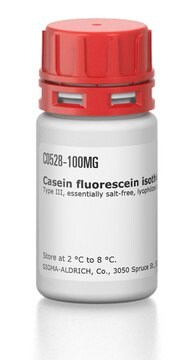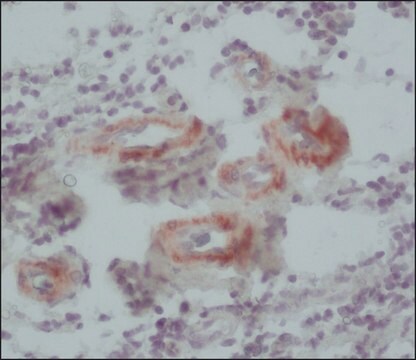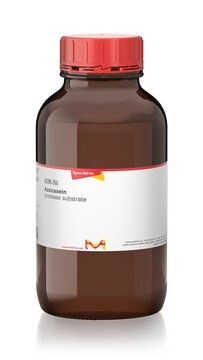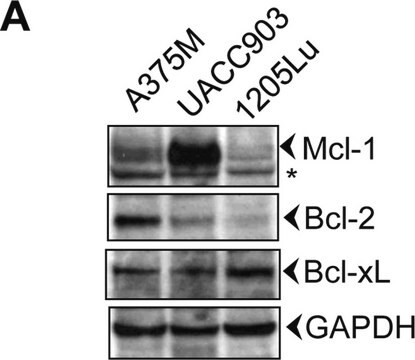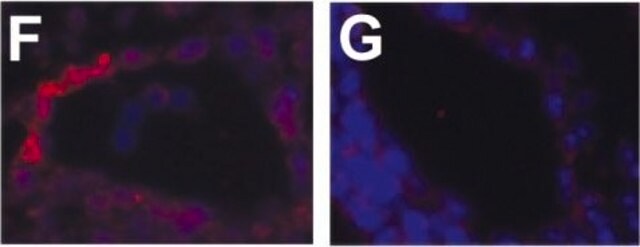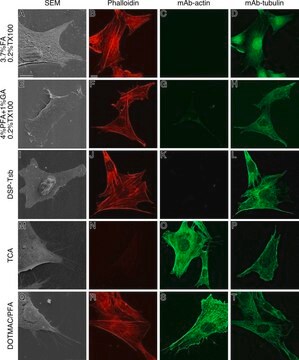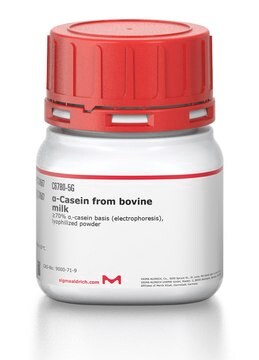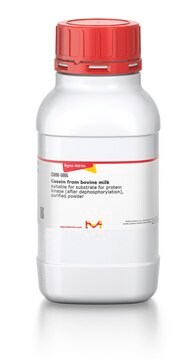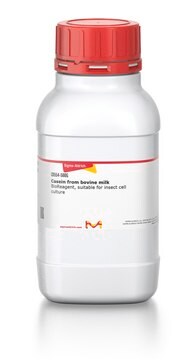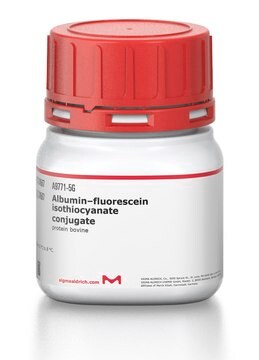C3777
Casein fluorescein isothiocyanate from bovine milk
Type II, essentially salt-free, lyophilized powder
Sinónimos:
FITC-casein
Iniciar sesiónpara Ver la Fijación de precios por contrato y de la organización
About This Item
Productos recomendados
type
Type II
Quality Level
form
essentially salt-free, lyophilized powder
extent of labeling
20-50 μg FITC per mg solid
solubility
water: 5 mg/mL, clear to hazy, yellow to orange
storage temp.
2-8°C
¿Está buscando productos similares? Visita Guía de comparación de productos
General description
Casein is a major milk phospho-protein and constitutes about 80% of the total protein content in milk. Bovine milk is composed of four types of casein such as, αS1, αS2, β, and κ. Casein exists as micelles in milk.
Application
Casein fluorescein isothiocyanate from bovine milk has been used:
- as a substrate for semi-quantitative analysis of protease in Arabidopsis cells
- to determine the caseinolytic activity of secreted LasB (elastase), alkaline protease and protease IV
- for determining the SpeB (cysteine protease) proteolytic activity in Streptococcus pyogenes cells
highly sensitive protease substrate
Biochem/physiol Actions
Casein micelle system is involved in the prevention of pathological calcification of mammary glands.
Storage Class
11 - Combustible Solids
wgk_germany
WGK 3
flash_point_f
Not applicable
flash_point_c
Not applicable
ppe
Eyeshields, Gloves, type N95 (US)
Elija entre una de las versiones más recientes:
¿Ya tiene este producto?
Encuentre la documentación para los productos que ha comprado recientemente en la Biblioteca de documentos.
Los clientes también vieron
Thomas S Murray et al.
Journal of medical microbiology, 59(Pt 5), 511-520 (2010-01-23)
Pseudomonas aeruginosa is an opportunistic Gram-negative pathogen capable of acutely infecting or persistently colonizing susceptible hosts. P. aeruginosa colonizes surfaces in vitro by either biofilm formation or swarming motility. The choice of behaviour is influenced by the physical properties of
Invited review: Understanding the behavior of caseins in milk concentrates
Corredig M, et al.
Journal of Dairy Science, 102(6), 4772-4782 (2019)
Mark F Mabanglo et al.
Communications biology, 2, 410-410 (2019-11-23)
Bacterial ClpP is a highly conserved, cylindrical, self-compartmentalizing serine protease required for maintaining cellular proteostasis. Small molecule acyldepsipeptides (ADEPs) and activators of self-compartmentalized proteases 1 (ACP1s) cause dysregulation and activation of ClpP, leading to bacterial cell death, highlighting their potential
Hui Gao et al.
Plant physiology, 173(1), 219-239 (2016-11-23)
Aspartic proteases are a class of proteolytic enzymes with conserved aspartate residues, which are implicated in protein processing, maturation, and degradation. Compared with yeast and animals, plants possess a larger aspartic protease family. However, little is known about most of
Michael Maurer et al.
Cell chemical biology, 26(8), 1169-1179 (2019-06-18)
ATP-driven bacterial AAA+ proteases have been recognized as drug targets. They possess an AAA+ protein (e.g., ClpC), which threads substrate proteins into an associated peptidase (e.g., ClpP). ATPase activity and substrate selection of AAA+ proteins are regulated by adapter proteins
Protocolos
Our General Protease Assay Procedures and Substrates overview.
Nuestro equipo de científicos tiene experiencia en todas las áreas de investigación: Ciencias de la vida, Ciencia de los materiales, Síntesis química, Cromatografía, Analítica y muchas otras.
Póngase en contacto con el Servicio técnico